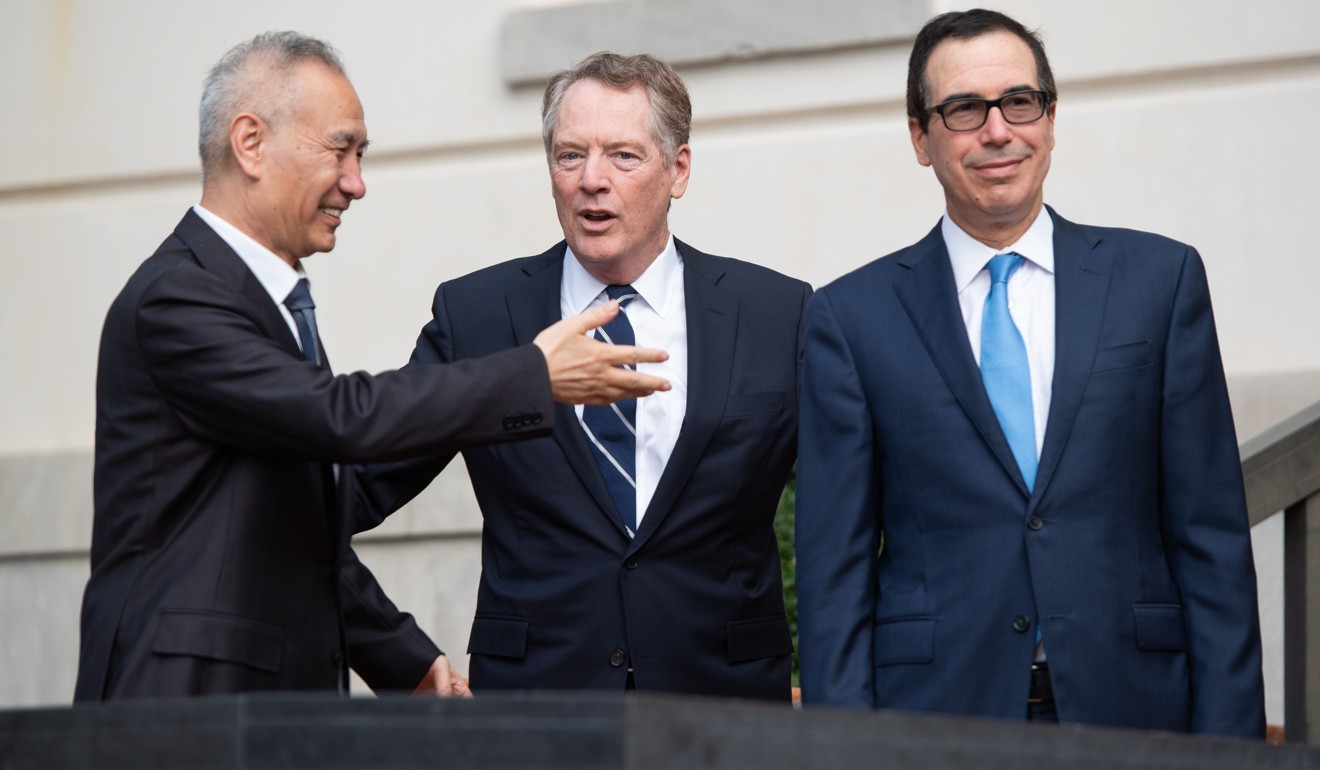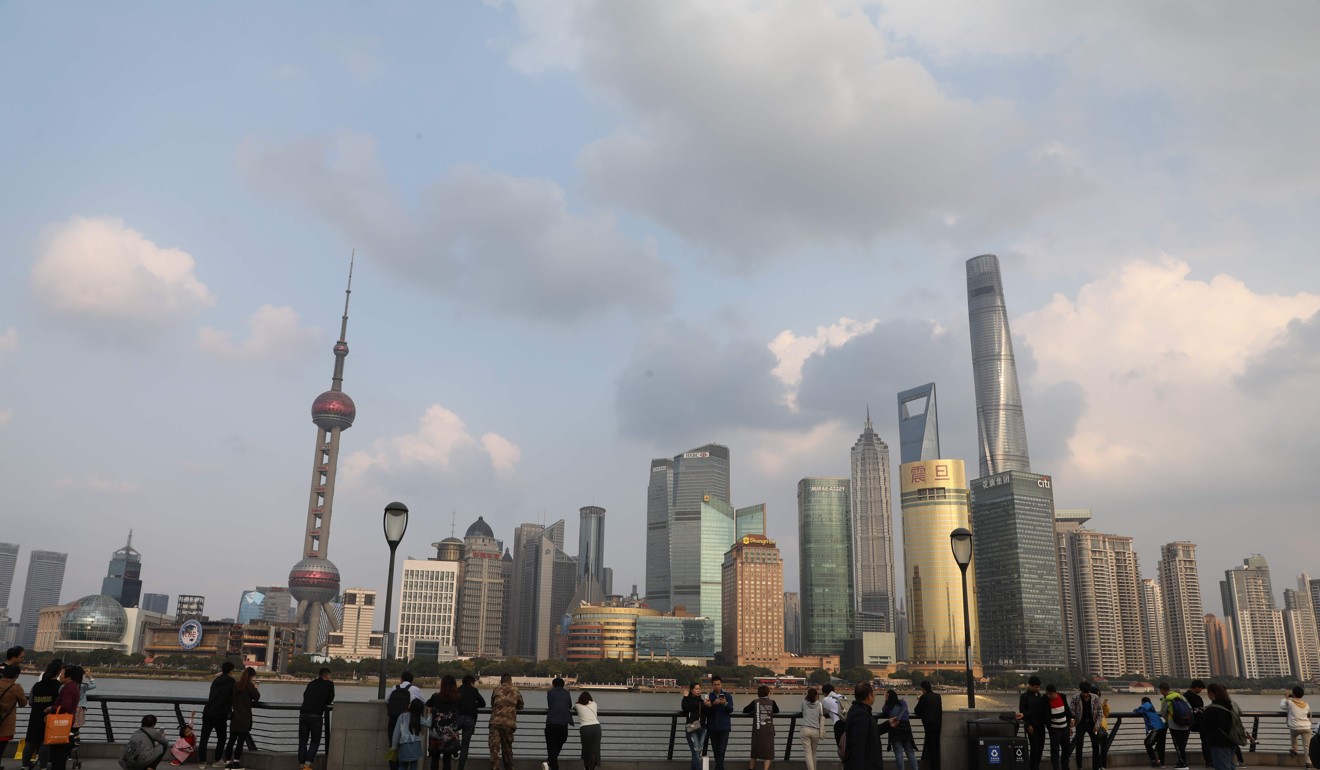
Beijing braced for 2020 of managing risks, with Xi Jinping’s feared ‘swans and rhinos’ yet to disperse
- Chinese president’s warning of potential surprises and threats was followed by a year in which the leadership was both tested and bolstered
- Economic headwinds and international scrutiny brought relief measures on critical fronts but a toning down of other initiatives
The list was all-encompassing, including warnings on foreign relations, ideology, the economy, social stability and technology, according to the official reports. The meeting was seen as an indication of the top Chinese leaders’ mounting concerns.
Many of Xi’s warnings proved accurate, some even worse than he had predicted. He warned the officials the year would be full of “black swans”, or surprising events, and “grey rhinos” – highly probable yet neglected threats.
As trade tensions with Washington exploded in 2019, Beijing tiptoed through the year with a strategy aimed at containing the impacts and retaliating against salvoes from the United States, along with a narrative intended to reassure its domestic audience despite a proliferation of tweets and leaks from the White House.

From Xinjiang to Tibet, Chen Quanguo is prime target of US sanctions
The year was seen by some analysts as a challenging one for Xi, who had assumed the presidency in 2013. Some suggested that the new year might be no easier for him.

Beijing had set 2020 as its target year for a number of key projects. It was the deadline for the Communist Party to achieve what it called a “comprehensive moderately prosperous society”, with a range of specific targets to reach in poverty eradication, economic growth and urban housing.
It is also the final year in which the party can prepare for a grand celebration of its 100th anniversary in 2021.
The analysts interviewed felt that there was little sign of the problems that had plagued China in the preceding year going away in 2020.
Xinjiang, Hong Kong … now US turns human rights attention to Tibet
For example, they expected China-US relations to remain rocky in the coming year even after the agreement of an interim trade deal between Beijing and Washington.
“The US-China relationship is more like a constant than a variable now, and the tensions will remain in the next year,” said Shi Yinhong, an international affairs expert with Renmin University and an adviser to the State Council, China’s cabinet.
“There’s no de-escalation of tensions in sight, except maybe in the field of trade.”

Despite senior officials from both sides confirming a partial deal had been struck on issues including punitive tariffs, Beijing was notably cautious about disclosing what concessions had been made to Washington, including the quantity of agricultural goods it had agreed to purchase.
The best-case scenario would be a further de-escalation of trade tensions, Shi said, adding that given the large agricultural purchases China needed to make to fulfil its side of the deal, trade talks could break down again.
Over the past year, Washington has systematically placed restrictions on access to American technology by Chinese manufacturers, investors and scientists on the grounds of national security. “Selective decoupling of the two countries will continue, especially on the technology front,” Shi said.
Trump says he will sign phase one US trade deal with China on January 15
Jude Blanchette, Freeman Chair in China Studies at the Centre for Strategic and International Studies, a Washington think tank, agreed. He said the tensions were expected to further fuel hawkish voices in the Chinese leadership in 2020.
“Voices arguing for continued engagement with the US will be drowned out by more hawkish elements in China’s political circle, in a sense mirroring what is happening in the US,” Blanchette said.
“Bolstered by Xi’s own hardline instincts, this means that the US and China will enter into a pronounced period of mutually reinforced distrust, which will further drive economic and financial decoupling.”
The Chinese government has responded by intensifying its efforts to achieve self-reliance in technology, pumping cash into fledgling research centres.
“Beijing will continue to build its own economic bloc to offset US efforts at economic containment and to assure overseas market access for Chinese firms, Huawei being one of the most important,” Blanchette said, naming the Chinese telecommunications equipment maker.
Mainland university student among eight charged over Hong Kong protest
Meanwhile, strategic confrontation, including Washington’s support for Taiwan, would continue, Shi said, with the widely expected re-election of Tsai Ing-wen, Taiwan’s independence-leaning president, likely to provoke further moves in response from Beijing. Benefiting partly from the self-ruled island’s growing concerns as the crisis in Hong Kong unfolded, Tsai led in most opinion polls as voters prepared to vote on January 11.
“If Tsai is elected and the US’ policy under President Donald Trump to offer more diplomatic and military support to Taiwan continues, the confrontation between Beijing and Taipei will only escalate,” Shi said.
Beijing opened further to investment from Taiwan in 2019, while placing tighter restrictions on the Taipei administration, suspending visits to the island by individual mainland tourists and detaining a handful of Taiwanese activists on the mainland, citing national security concerns.

Shi expected the Korean peninsula to contribute to rising US-China tensions in the next year. “If [North Korean leader] Kim Jong-un grows impatient about US sanctions [on the North] and gets back to testing mid-range missiles, [we can expect] China will show greater sympathy for North Korea and be more critical in dealing with the US,” he said.
Russia and China last month proposed lifting some sanctions against the nuclear-armed North, on the condition of Pyongyang committing to UN Security Council resolutions on denuclearisation.
Beijing toned down some assertive strategies such as its indigenous industrial policy. “A continuous strategic retreat could help improve ties with the US and other developed countries, but we don’t know if it will last,” Shi said.
Hong Kong protest posts, Tokyo 2020 failure and Aethero mark 2019
In 2019, China dropped its ambitious industrial plan Made in China 2025, at least nominally, from its annual government working report. It has also played down the Thousand Talents Plan, which was aimed at attracting technology talents from the US and other developed countries to Chinese laboratories.
Under attack for its “debt trap diplomacy”, Beijing also established a sustainability framework to support projects under the Belt and Road Initiative, its transcontinental infrastructure strategy.
But those moves came alongside a growing trend among Chinese diplomats, who took a more aggressive stance in defending China’s policies in 2019. In a speech in September, Xi called on a broad range of officials to prepare for more “struggles”, a term that harked back to the Mao Zedong era.

“The Communist Party is done with playing nice, and 2020 will be the year in which we see the more nationalistic and chauvinistic steps come into full play,” Blanchette said. “Beijing will continue to keep one eye on its global reputation, but voices of restraint will be increasingly marginalised.”
With domestic and international challenges continuing to arise, “the leadership’s control over Chinese society will only grow tighter”, Shi said.
Hong Kong leader vows to rebuild city in new year resolution
The party has shown little interest in scaling back its insistence on loyalty to Xi. Just after Christmas, in a two-day year-end meeting of the 25-strong Politburo, the party’s most powerful body, Xi was referred to as “People’s Leader”. While not translating into any specific new power, the label spoke volumes of the efforts to defend Xi’s personal status, against a harsh global backdrop, observers said.
“It seems that [the new title] aims to put to rest any negative discussion about his leadership,” Beijing-based political commentator Zhang Lifan said. “This is a title once used by Mao and no one else … so Xi is now being put on a par with Mao.”

Gu Su, a political scientist at Nanjing University, argued that the title meant little beyond an indication of symbolic power.
“I don’t see anything coming next along this line yet; almost everything about consolidating Xi’s power has been done,” he said.
Gu believed the biggest challenges in 2020 would come from a slowing economy. “The latest consumer price index was 4.5 per cent, the highest official figure in recent years, and pork prices are still high,” he said. “A chain reaction could affect public sentiment.”
Recent official directives to protect entrepreneurs had underlined Beijing’s concern about the private sector, the driving force of the country’s growth and job market, Gu said.
Indonesia protests ‘violation of sovereignty’ by Chinese coastguard
Early last month, China’s top prosecutor urged prosecutors nationwide not to prosecute or arrest business owners unless they had to. “I would say this is quite an extreme precaution for the sake of the economy,” Gu said.
Also last month, Beijing prioritised social stability at its Central Economic Work Conference and subsequently promised measures to prioritise employment as it anticipated further pain for the economy, including from trade tensions with the US.
China’s employment rate, considered vital to social stability, became as scrutinised as the country’s GDP, which in the third quarter grew 6 per cent – its slowest growth in nearly three decades.
“I don’t see any major political risks in sight – what is happening in Hong Kong seems unlikely on the mainland,” Gu said. “But discontent with economic causes has the potential to filter through.”

